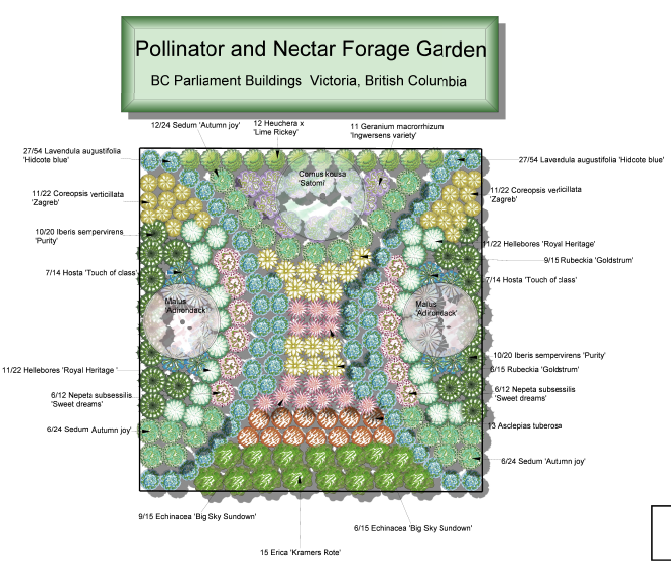
A plant saucer or shallow bird bath work well.
Pollinator garden design Patch#
Locate your pollinator patch in a spot that gets ample sunlight, since many pollinators are energized by the warmth of the sun.


Plant native plants: Native plants are more attractive to local pollinators than imported or hybridized plants because because the plants and native pollinators have evolved together.Learn more about growing goldenrod plants.įor more variety in your pollinator garden, see 10 Perennials for Pollinators, Top 10 Shrubs for Pollinators and 10 Annuals for Pollinators. Honeybees visit them in droves prior to winter to collect their nectar, and other bees use the pollen to provision late-season nests. Goldenrods are among the most important late-season pollinator plants, according to 100 Plants to Feed the Bees. Get more region-specific resources (plant lists, habitat assessment, and more) from The Xerces Society. These 10 perennials are all native to North America and attract butterflies and bees, as well as other beneficial insects.

10 TIPS FOR STARTING A POLLINATOR GARDEN.On this page: 10 Pollinator-Friendly Plants | 10 Tips for Starting a Pollinator Garden (Read her article " Everyone Can Play a Role in Pollinator Conservation".) If you do not have the yard space, you can fill a decorative planter with pollinator-friendly plants and place it in a sunny spot on your patio or stoop,” says Kelly Gill, pollinator conservation specialist for The Xerces Society. “Small plantings may seem insignificant to you, but if each yard devotes a small area to pollinators, your neighborhood will serve as a season-long buffet of nectar and pollen that supports a diversity of bees, butterflies, and other flower visitors. Fortunately, you can play a role in reversing this trend by creating a pollinator habitat in your garden. Butterflies, bees, and other pollinators are becoming rare sights due to the widespread use of pesticides and a dwindling supply of the nectar-rich flowers they rely on for food. One of the major reasons for dwindling pollinator populations is habitat loss. If your garden has become a ghost town rather than a hive of activity from pollinators, you’re not alone. Pollinator patch planted by the second grade students at Abraham Lincoln Elementary School, Glen Ellyn, Ill. Bring a variety of insects to your pollinator garden by choosing native plants with different flower colors, shapes, sizes, and blooming periods.


 0 kommentar(er)
0 kommentar(er)
